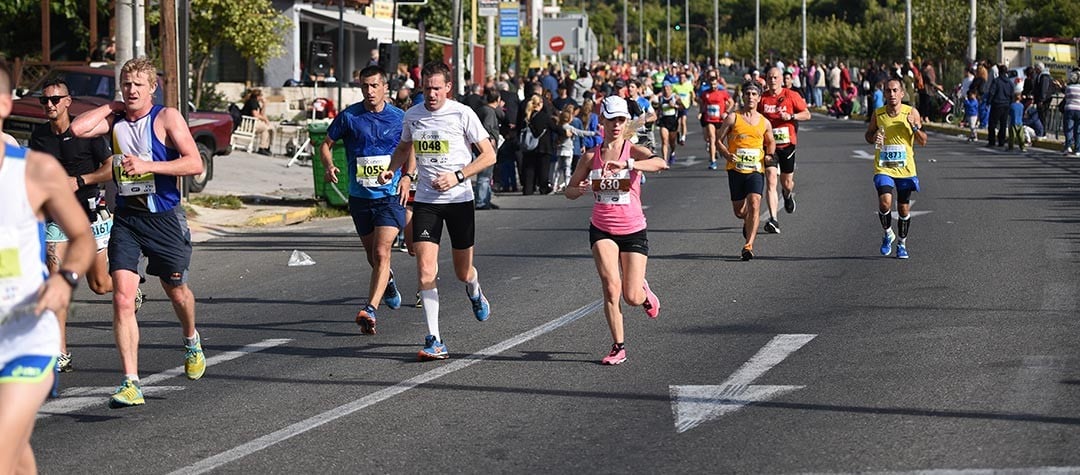If you’ve set your sights on lowering your marathon personal best then check out these top tips to help you improve your speed over the marathon.
Marathon running is tough, there’s no doubt about it. Not only is there the small matter of 26.2 miles (42.195km) to contend with, but you don’t get many chances to get it right. Find out how to improve your marathon speed with these tips.
1. Speed comes from strength
Speed is of course relative when it comes to the marathon. We’re not talking about being able to run 400m in 60 seconds here! It’s a common assumption that in order to improve your speed you need to be smashing out lots of speed work . However, what many runners fail to realise is that speed actually comes from having a solid endurance base.
You can build your endurance through weekly long runs and simply by increasing the volume of easy and steady running that you do.
You can build your endurance through weekly long runs and simply by increasing the volume of easy and steady running that you do. This will stimulate metabolic adaptations within your muscles such as increased mitochondria and oxidative enzymes, meaning that you’ll be able to hold your speed for longer.
2. Run at race pace over shorter distance
Whatever the distance you’re training for, in order to prepare your body for the demands of the event you need to include some specific work around your goal race pace and the marathon is certainly no exception. Throughout your marathon build up, aim to include some tempo running at close to your goal marathon race pace on a regular basis. You can include this type of work by picking up the final third of some of your long runs to goal marathon pace or by including some sustained tempo running.
Marathon tempo runs can be anywhere between 5 and 15 miles (approximately when you consider that in normal training you haven't tapered or carbo-loaded). If you're feeling good then you should aim to pick up the pace in the last few miles or kilometres. You should finish marathon tempo runs feeling like you could have run a little bit faster rather than feeling like you were hanging on for grim death!
You should finish marathon tempo runs feeling like you could have run a little bit faster rather than feeling like you were hanging on for grim death!
The trick is to gently increase the volume of specific training as you get closer to the race. If you introduce specific training too early in your build up you will most likely be too fit too soon and then more at risk of being fatigued or injured by the time the race arrives.
3. Speed support
Whilst there’s no doubt that longer runs and sustained efforts are really important aspects of marathon training, you still shouldn’t neglect some slightly speedier work at your 5k and 10k pace. Including some work at this pace will make running at marathon pace feel that little bit easier. Once every 7-10 days aim to run at your 5k-10k pace. This could involve an interval session such as 15 x 1 minute with 1 minute jog recovery or 6-8 x 3 minutes with 90 seconds jog recovery or you could even do your local park run if you fancy a 5k blast with some company!
4. Improve your economy
When you’re running 26.2 miles having enough fuel to get you to the finish is one of the event’s biggest challenges. to get you to the finish is one of the event’s biggest challenges. For this reason, limiting energy wastage and using the fuel that you have as economically as possible is crucial. Running economy is a measure of the volume of oxygen that you use, and therefore the energy demand of running at any given sub-maximal speed. To some extent running economy is genetic. However, there are various factors that affect it that you have the power to improve.
Many of the fundamental physiological adaptations required to make you more efficient at using oxygen are stimulated by easy running.
The easiest way to improve running economy is simply to include a little more easy running in your training programme. Many of the fundamental physiological adaptations required to make you more efficient at using oxygen are stimulated by easy running. Basic plyometric exercises such as hopping and bounding are another great way of improving running economy as these exercises increase the ability of the muscles to store and release elastic energy.
5. Conserve your cadence
It can be tricky to maintain your leg speed or cadence when you’re marathon training. ‘Strides’ are a great way to do this without having to hammer yourself with lots of speed work. Once or twice a week after an easy run, try 6 x 75-150m with a walk back recovery. You should be running at close to your maximum speed without actually sprinting.
‘Strides’ train your nervous system to allow you to maintain a faster rate of leg turnover, which is particularly beneficial when you’re logging all those marathon miles. I really hope these tips help you towards a faster marathon. Good luck and happy training!















